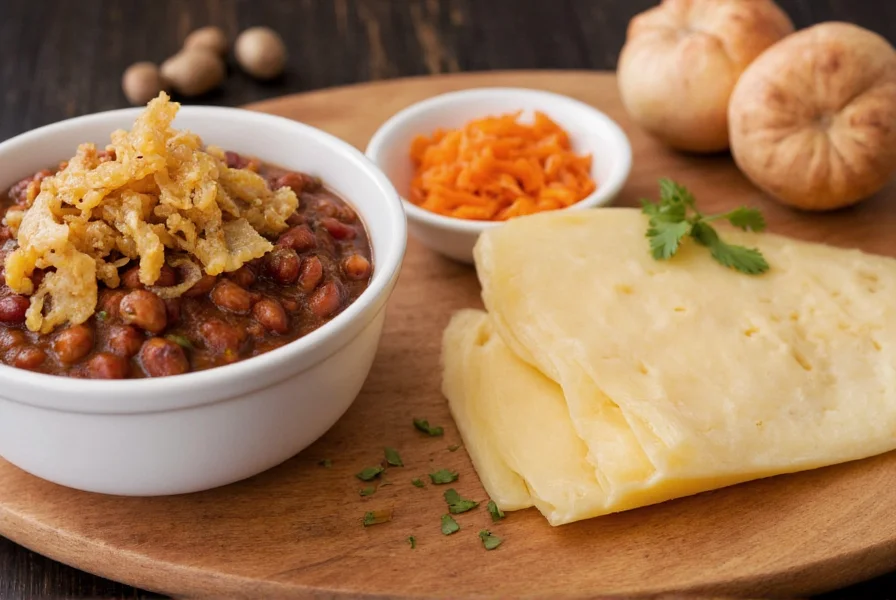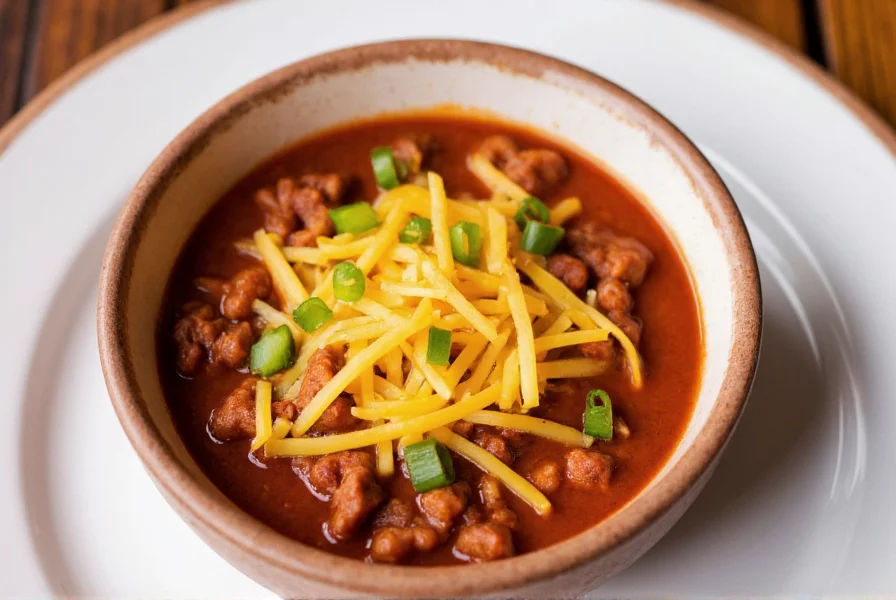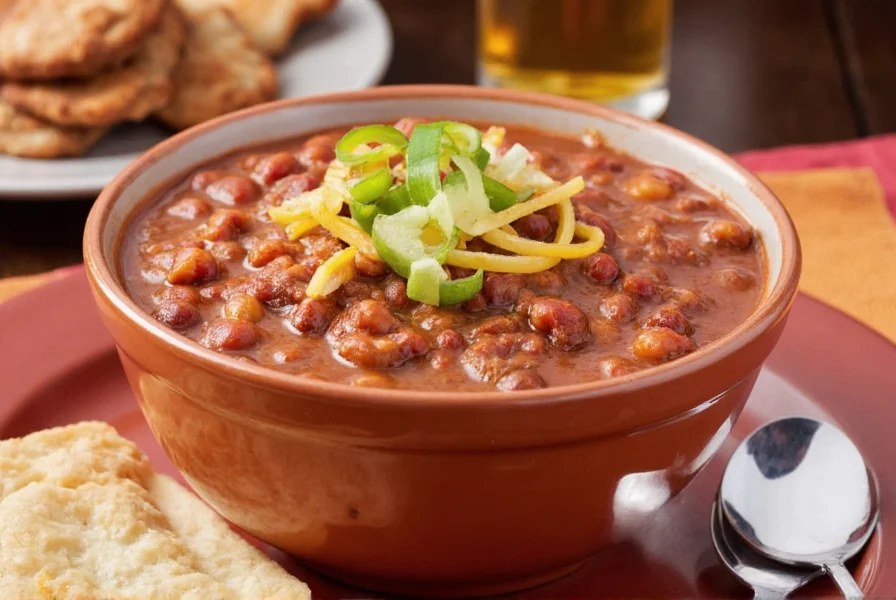For chili enthusiasts seeking to elevate their recipe beyond standard ingredients, incorporating Pleasant Ridge Reserve cheese transforms an ordinary dish into something extraordinary. This Wisconsin-made cheese, which has won multiple awards including Best in Show at the American Cheese Society competition, brings a unique terroir-driven flavor profile that complements the spices and proteins in chili perfectly.
The Story Behind Pleasant Ridge Reserve
Created by Uplands Cheese Company in Dodgeville, Wisconsin, Pleasant Ridge Reserve is a raw cow's milk cheese inspired by traditional Alpine cheeses. The cheesemakers follow a seasonal production schedule, crafting the cheese only from May through October when the cows graze on fresh pasture. This seasonal approach results in subtle flavor variations throughout the year, with spring cheeses showing brighter, grassier notes while fall batches develop deeper caramel and nutty characteristics.

Why This Cheese Works Exceptionally Well in Chili
Pleasant Ridge Reserve's complex flavor profile makes it particularly well-suited for chili applications. Unlike milder cheeses that might get lost in the robust flavors of chili, this cheese maintains its distinctive character while enhancing the overall dish. The cheese's natural sweetness balances the heat from chili peppers, while its firm texture allows it to melt smoothly without becoming greasy.
Food scientists note that cheeses with moderate fat content (around 45-50%) like Pleasant Ridge Reserve create the ideal mouthfeel when incorporated into hearty dishes. The cheese's pH level also interacts favorably with the acidic components commonly found in chili recipes, creating a more harmonious flavor profile.
| Characteristic | Pleasant Ridge Reserve | Traditional Cheddar |
|---|---|---|
| Milk Type | Raw cow's milk (seasonal) | Pasteurized cow's milk |
| Aging Period | 10-14 months | 2-24 months |
| Flavor Profile | Nutty, grassy, caramel notes | Sharp, tangy |
| Melting Quality | Smooth, creamy melt | Can become oily |
Classic Pleasant Ridge Chili Recipe
This recipe serves 6-8 people and takes approximately 2 hours from start to finish, including preparation and simmering time. The extended simmering allows flavors to develop fully while the cheese adds its distinctive character at the end.
Ingredients
- 2 lbs ground beef (80% lean)
- 1 large yellow onion, finely diced
- 4 cloves garlic, minced
- 3 tbsp chili powder
- 2 tsp cumin
- 1 tsp smoked paprika
- 1 (28-oz) can crushed tomatoes
- 1 (15-oz) can kidney beans, drained
- 1 cup beef broth
- 8 oz Pleasant Ridge Reserve cheese, grated
- Salt and freshly ground black pepper to taste
Step-by-Step Preparation
- Brown the ground beef in a large Dutch oven over medium-high heat, breaking it into small pieces as it cooks.
- Add onions and cook until translucent (about 5 minutes), then stir in garlic and cook for 1 additional minute.
- Stir in chili powder, cumin, and smoked paprika, cooking for 1 minute to toast the spices.
- Add crushed tomatoes, kidney beans, and beef broth. Bring to a simmer.
- Reduce heat to low, cover, and simmer for 1.5 hours, stirring occasionally.
- Season with salt and pepper to taste.
- Remove from heat and stir in grated Pleasant Ridge Reserve cheese until fully incorporated.
- Cover and let rest for 10 minutes before serving to allow flavors to meld.

Variations and Customization Options
While the classic recipe shines on its own, several thoughtful variations can accommodate different dietary preferences while maintaining the distinctive Pleasant Ridge flavor profile:
- Vegetarian Version: Substitute the ground beef with 2 cups cooked lentils and 1 cup chopped mushrooms. Use vegetable broth instead of beef broth.
- Smoky Chipotle Variation: Add 2 minced chipotle peppers in adobo sauce along with 1 teaspoon of maple syrup to balance the heat.
- White Bean Chili: Replace kidney beans with Great Northern beans and use ground turkey instead of beef for a lighter version that still showcases the cheese.
Serving Suggestions and Pairings
To fully appreciate the nuanced flavors of Pleasant Ridge chili, consider these serving recommendations:
- Top with additional grated Pleasant Ridge Reserve just before serving for an extra flavor boost
- Pair with a crusty sourdough bread or cornbread to complement the cheese's natural sweetness
- Balance the richness with a simple green salad featuring a light vinaigrette
- For beverages, select a medium-bodied red wine like Zinfandel or a malty amber ale
Storage and Reheating Tips
Proper storage maintains the quality of your Pleasant Ridge chili for future enjoyment:
- Cool completely before storing in airtight containers
- Refrigerate for up to 4 days or freeze for up to 3 months
- When reheating, do so gently over low heat to prevent the cheese from separating
- Consider adding a small amount of additional cheese when reheating to refresh the flavor profile
Frequently Asked Questions
Can I substitute other cheeses for Pleasant Ridge Reserve in chili?
While Pleasant Ridge Reserve offers a unique flavor profile, suitable substitutes include aged Gruyère, Comté, or a high-quality aged cheddar. These cheeses share similar nutty characteristics and melting properties. However, each will impart slightly different flavor notes, so the distinctive Pleasant Ridge character will be altered.
When is the best time to add Pleasant Ridge cheese to chili?
Add the grated cheese during the final stage of preparation, after removing the chili from heat. This preserves the cheese's complex flavor compounds that can break down with prolonged high heat. Let the chili rest covered for 10 minutes after adding the cheese to allow for proper melting and flavor integration without overheating the delicate cheese proteins.
How does seasonal production affect Pleasant Ridge cheese in chili?
Since Pleasant Ridge Reserve is made only from May through October using pasture-grazed cow's milk, seasonal variations affect its flavor profile. Spring cheeses have brighter, grassier notes that complement lighter chili variations, while fall cheeses develop deeper caramel notes that enhance heartier meat-based recipes. The cheese's moisture content also varies slightly by season, affecting how it melts into the chili.
Can I use Pleasant Ridge cheese in vegetarian chili?
Absolutely. Pleasant Ridge Reserve enhances vegetarian chili beautifully by adding umami depth that compensates for the absence of meat. For best results, use it with bean-based or mushroom-heavy vegetarian chili recipes. The cheese's natural sweetness balances the earthiness of plant-based ingredients while its fat content provides richness typically associated with meat-based versions.
What makes Pleasant Ridge Reserve different from regular cheddar in chili?
Pleasant Ridge Reserve undergoes a longer, more controlled aging process (10-14 months) compared to most cheddars, developing complex flavor compounds from the diverse pasture grasses. Its raw milk production preserves natural enzymes that create a smoother melt and more nuanced flavor integration in chili. Unlike many cheddars that can become oily when melted, Pleasant Ridge maintains a creamy consistency that enhances rather than separates from the chili base.











 浙公网安备
33010002000092号
浙公网安备
33010002000092号 浙B2-20120091-4
浙B2-20120091-4